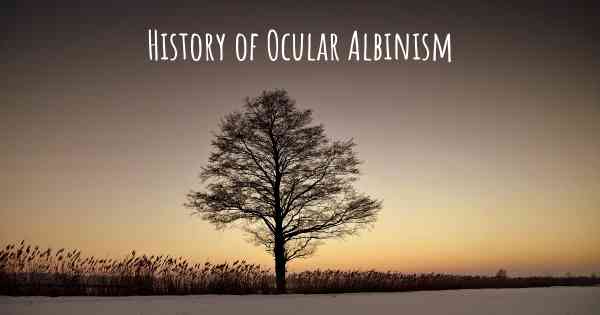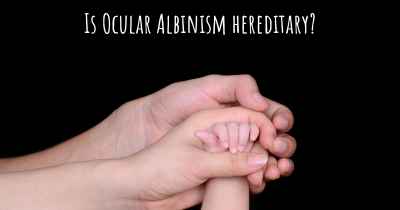What is the history of Ocular Albinism?
When was Ocular Albinism discovered? What is the story of this discovery? Was it coincidence or not?

Ocular albinism is a genetic eye disorder that primarily affects the pigmentation of the eyes. It is a rare condition that occurs almost exclusively in males, although females can be carriers of the gene mutation. This disorder is characterized by reduced pigmentation in the iris, retina, and other structures of the eye, leading to various visual impairments.
Historical Background:
The history of ocular albinism dates back to ancient times, although the condition was not fully understood until more recent centuries. The earliest known references to individuals with symptoms resembling ocular albinism can be found in ancient Egyptian texts, where descriptions of individuals with light-colored eyes and poor vision were documented.
However, it was not until the 19th century that ocular albinism began to be recognized as a distinct medical condition. In 1866, a British ophthalmologist named Jonathan Hutchinson first described the disorder as "albinism of the eye" in a medical publication. He observed that affected individuals had pale irises and nystagmus (involuntary eye movements), which are common features of ocular albinism.
Scientific Advances:
Throughout the 20th century, further research and scientific advancements shed light on the underlying causes and mechanisms of ocular albinism. In the early 1900s, researchers began to recognize that the condition was inherited in an X-linked recessive manner, meaning the gene mutation responsible for ocular albinism is located on the X chromosome.
In the 1960s, geneticists made significant progress in understanding the genetic basis of ocular albinism. They discovered that the condition is caused by mutations in the GPR143 gene, which provides instructions for producing a protein involved in the development and function of melanocytes (cells responsible for producing melanin, the pigment that gives color to the eyes, skin, and hair).
Current Understanding:
Today, our understanding of ocular albinism continues to evolve as researchers uncover more about the genetic and molecular mechanisms involved. Advances in genetic testing have allowed for more accurate diagnosis and identification of specific gene mutations associated with the condition.
While ocular albinism remains an incurable condition, various management strategies have been developed to help individuals cope with the visual impairments it causes. These may include visual aids, such as glasses or contact lenses, to correct refractive errors, as well as low-vision aids and assistive technologies to enhance visual function.
Impact on Individuals:
Ocular albinism can have a significant impact on affected individuals, both physically and emotionally. The visual impairments associated with the condition can affect daily activities, such as reading, driving, and recognizing faces. Additionally, individuals with ocular albinism may experience social and psychological challenges due to their unique appearance and visual limitations.
Research and Future Directions:
Ongoing research aims to further unravel the complexities of ocular albinism and develop potential treatments or interventions. Scientists are investigating gene therapy approaches to correct the underlying genetic mutations responsible for the condition. Additionally, advancements in stem cell research hold promise for regenerating or replacing damaged cells in the eye.
As our understanding of ocular albinism continues to expand, it is hoped that improved diagnostic techniques, treatment options, and support systems will be developed to enhance the quality of life for individuals affected by this rare eye disorder.








